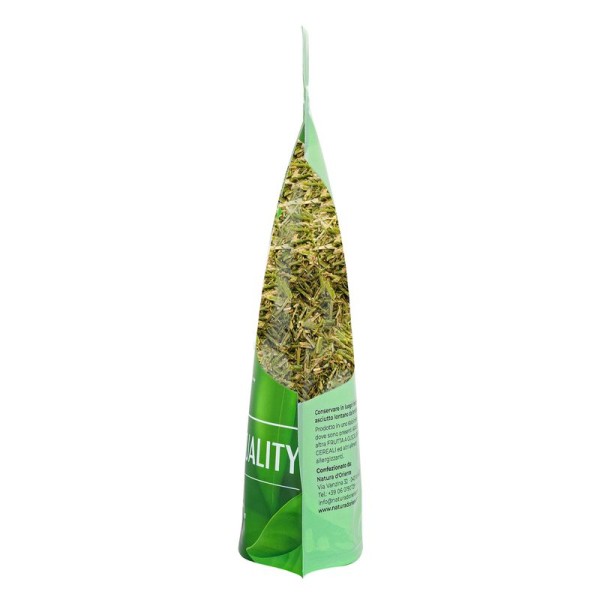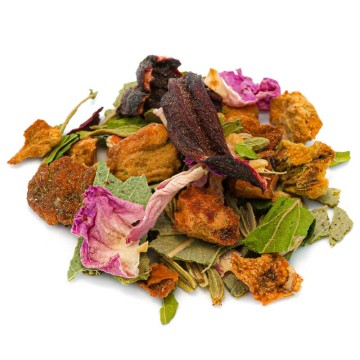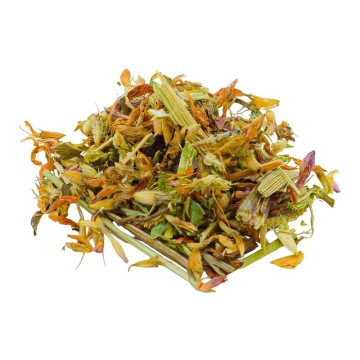Passion flower, also known as "passion flower" because it recalls the famous crown of thorns, is a medicinal plant known for its antispasmodic and sedative properties . It is used in herbal medicine by exploiting its tops, that is, the parts of flowers, leaves and stems of the plant. Historically it was used for the treatment of anxiety, insomnia, convulsions and nervous disorders, and yet its qualities are beneficial for various conditions of agitation; as well as for the well-being of the gastrointestinal system.
Passionflower: properties and benefits
Known as a herb with anxiolytic properties, this plant possesses qualities capable of calming the central nervous system. It helps psychophysical relaxation, useful in preventing insomnia, and improves the quality of sleep.
It has a soothing effect on states of nervousness, irritability, favorable for reducing agitation and anxiety. We know that our stress response can cause anxiety, feelings of worry and nervousness. For this reason, a passion flower herbal tea is recommended to calm the states of mild anxiety, and to give us a relaxation that helps the body and mind to restore our balance.
Passionflower can reduce anxiety by increasing the levels of a chemical in our brain, gamma-aminobutyric acid , known as GABA. This substance induces relaxation and decreases mild anxiety states.
In addition, the alkaloids contained in passionflower can give effects that help the mood. Also at the gastrointestinal level, passionflower is known as a plant whose tops in herbal tea bring relief to various disorders of nervous origin, such as colitis or gastritis. It is also helpful in the case of irritable bowel, thanks to its antispasmodic activity; a useful support against abdominal pain, which also brings relief for menstrual cramps.
Research has examined the potential benefit of using passionflower to reduce some symptoms of menopause. During this phase of female life, passionflower can give the body its beneficial characteristics which, even in combination with other herbs, help relieve hot flashes, palpitations, anxiety or mood disorders, insomnia and headaches. At the vascular level, thanks to its calming and hypotensive qualities, it helps regulate blood pressure during the menopause transition.
Origins and History of cultivation
Passion flower is a climbing vine, originally from south-eastern North America but now grown throughout Europe. This plant now has about 500 species of passionflower, which grow as shrubs, vines or herbaceous plants. Some of its varieties have been used over the centuries to treat many health conditions. The native peoples of the Americas , used passionflower as a sedative as well as as food.
Discovered by Spanish explorers of the sixteenth century in South America, it was brought to Europe and cultivated, introduced in gardens and in folk medicine. Even in the nineteenth century the plant was clinically proven to treat tetanus, as well as in herbal medicine as an aid for the nervous system, convulsions, heart palpitations and nervous headaches.
Furthermore, on the gastrointestinal level it was used against indigestion and dysmenorrhea. The name of the genus Passiflora was given by the phrase "passion flower", which derives from Christian symbology. The crown of thorns remembered by its flowers, the hammer and the nails remembered by the 3 internal styles. In 1605, a passion flower plant was given to Pope Paul V, planted as a gift in his honor. Today, as we have seen, passionflower represents a phytotherapy resource, in the form of infusions, teas, liquid extracts and tinctures.
It is also applied to the skin to soothe burns and hemorrhoids. In addition, the food industry uses passionflower extract to flavor food and drinks .
Plant and flowers
The Passiflora spp. is a perennial plant belonging to the Passifloraceae family.
It is a climbing vine native to the southeastern area of North America and South America. It tends to be a fast growing plant, in full sun and especially along roadsides, up to around 1.80 meters. Some passion flower species can easily spread in warmer climates. The Passiflora genus contains more than 500 species, and the most widely used in herbal medicine is Passiflora incarnata, whose leaves and roots have a long history as an ingredient in folk medicine among Native Americans. The plant produces a delicate purple or blue (sometimes red, rosa or white), and develops edible fruit during the summer months.
Grows best in moist but drained soil.
Nutritional values of passionflower
The active components of flowers and top of the plant , are mainly flavonoid antioxidants, , as well as phenolic compounds, glycosides and organic acids (such as linoleic, butyric, linolenic, malic, palmitic and oleic acids). The tops contain beneficial flavonoids including: quercetin, rutin, saponarine, apigenin, kaempferol, luteolin . Among the plant alkaloids useful for the qualities of passion flower, there are harmine, harmaline, armano or passiflorina.
How to use the tips of passionflower in herbal tea
The infusion of passionflower is obtained by putting in a cup (250 ml), about 3-5 grams of the tops in herbal tea cut, with water at 100 ° C. Leave to infuse for 7-8 minutes, before drinking the herbal tea. Add honey or sugar if desired.
Passionflower: side effects and contraindications
Usually the extracts of this plant are tolerated without major side effects. In some cases, however, sensitivity reactions may occur which may include nausea, vomiting, severe drowsiness, mental slowing. At the heartbeat level it can give acceleration effects, or give hypotension effects. In particular, it is good to respect the recommended doses and not to excessively prolong the treatment times, it is advisable not to take passionflower for a period exceeding two months.
Having properties that act on the nervous system, passionflower may interact with some medications , such as some antidepressants, sedatives, medications for insomnia, and blood thinners. For this, the specialist doctor can give a valid indication on the intake of this infusion.
Do not use passionflower during pregnancy and breastfeeding.











 No reward points for this product.
No reward points for this product.















